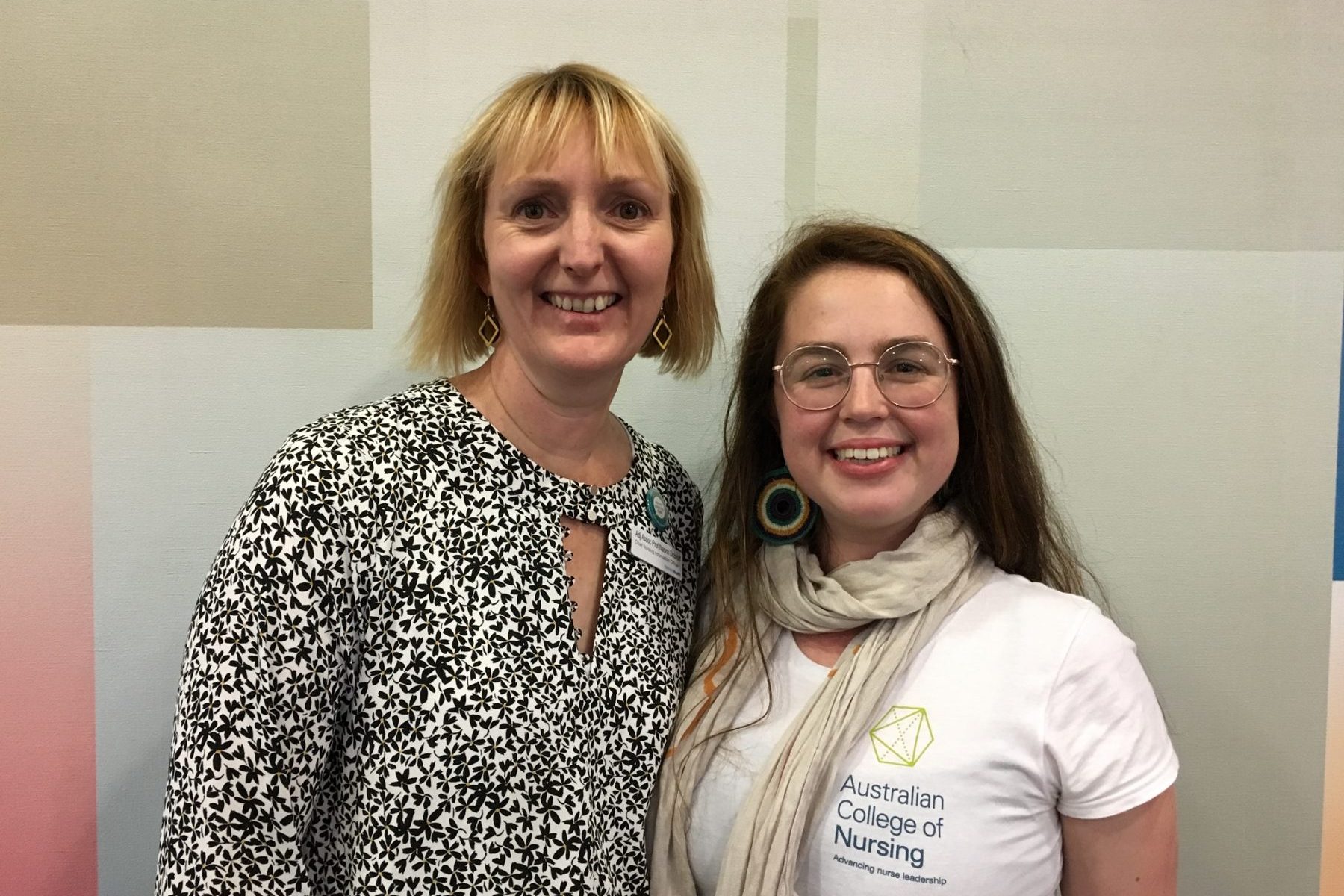Ariela Rother MACN with Naomi Dobroff FACN.
Throughout November our Nurse Informatics Community of Interest (COI) is running a campaign focusing on raising awareness of informatics and recognizing the excellent work nurses are doing in the informatics space. Across the month we will share with you four fascinating articles on NurseClick written by members of the COI.
You can support the campaign by using the hashtag #doingITwithcare during the month of November. If you are interested in joining the Nurse Informatics COI you can do so on neo.
As nurses we have a responsibility to ensure our practice is relevant and evidence-based. Working in a busy, high acuity ward, it is hard to find the time to read and disseminate the plethora of current research that is available to provide the best evidenced practice. The nature of health care in Australia is constantly changing and with the increase of burden of disease, health care systems are relying on health professionals to make more decisions – efficiently and effectively.
Electronic medical records (EMR)or electronic health records (EHR) enable nurses to be critical thinkers by using data to manage patient care information, monitor care quality and evaluate outcomes. Finding ways that we can incorporate relevant information into our practice and having data easily accessible at the bedside makes the ultimate nursing goals of providing safe, quality and evidence-based patient care within our reach.
With the advent of modern technology into the nursing world, it’s a no-brainer that the combination of the clinical and technological advancements can help achieve this goal. Leading the way in the field of nursing informatics are Chief Nursing Information Officers, who are at the forefront of this nursing care reform.
I had the pleasure of spending a day with Adjunct Associate Professor Naomi Dobroff FACN, the Chief Nursing Information Officer at Monash Health in Victoria, observing and discovering how she is transforming the nursing profession through health information processes and technology/applied computer science.
Whilst Naomi’s day consisted of many meetings, which varied from organising presentations for events and team meetings to discuss the implementation of electronic records and systems, her work largely involves being an advocate and a voice for the nursing profession through clinical leadership. It was very clear that having a nurse presence at these meetings was very important. The nursing profession is the largest single health profession in Australia (Health Workforce Australia, 2014), making it vital that nurses have a voice at executive levels when significant decisions and changes are made.
Throughout the day, I was also able to learn in-depth about how the nursing informatics teams are using their skills to implement the (EMR) system across their health service in Melbourne. Although Naomi is an incredible nurse leader, she was very open about the importance of having a team with a variety of skills, especially those that she felt she didn’t have herself. I admired the fact that the multi-disciplinary teams are made up of professionals from all areas of healthcare to ensure that there is true multi-disciplinary representation in the design, and ultimately when implementing, the EMR.
In the Chief Nursing Information Officer role, it is vital to have strong relationships with nurses at all levels of health care, especially with the Directors of Nursing. These relationships ensure that communication between the needs of patients and clinical nursing staff are properly translated into how the nursing informatics team can improve the change and transition of the technologies into patient care. Another important part of Naomi’s role is to advocate for the benefits of electronic records and how they are improving patient outcomes and communication, identifying risks to implement prevention strategies, and continuously re-evaluating the implementation of the EMR system.
It takes a lot of time for people to adapt to change, but nursing informatics promotes the benefits of electronic records, systems and digitalisation to encourage and facilitate healthcare professionals to make better clinical decisions, and prepare nurses for this significant change that will ultimately lead to improved communication and patient outcomes.
It was an incredible opportunity to visit Naomi at Monash Health and I encourage all nurses to get involved in this new and upcoming field of nursing. Join the ACN Nursing Informatics Community of Interest (COI) on neo to find out more.
Thank you to Chief Nursing Informatics Officer Associate Adjunct Professor Naomi Dobroff FACN for her time and support.
By Ariela Rother MACN
References
Health Workforce Australia 2014: Australia’s Future Health Workforce – Nurses Detailed.





